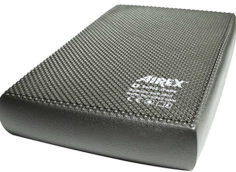Here's what you need to know...
- Performing 20 reps of four exercises with your 10RM can trigger muscle gain and fat loss in a short, but excruciating rest-pause workout.
- Rest-pause training involves taking a set to failure, resting only 5-10 seconds, then cranking out additional reps. Repeat until you hit 20 total reps.
You've heard the pitch before: "You can build muscle and lose fat, and all it takes is 20 minutes a week!" I'm sure there's some infomercial on right now making the same outlandish claim. But the program I'm about to reveal really does deliver... if you have the grit to finish it.
The Workout
- A. Back Squat
- B. Chin-Up
- C. Deadlift
- D. Parallel-Bar Dip
- 1 workout per week
- 1 set per exercise
- 20 reps
- 2-0-1-0 tempo
- 5-minute rest between exercises
On paper this little routine doesn't look too daunting, especially when you're doing only one set of each exercise with five minutes of rest in between, but this is where it gets interesting – each set is conducted with a 10RM load .
In plain English, you'll perform 20 reps with a load that you'd normally max out with at 10 reps!
How's That Even Possible?
It's called rest-pause training. You take a set to failure, which in this case is 10 reps, and then rest for 5-10 seconds. Then squeeze out another rep or two and rest again.
Keep going in this manner until you reach 20 reps. At that point you'll probably collapse. By the time you regain consciousness, 5 minutes should've elapsed and it's time for the next exercise.
Make sure to warm-up thoroughly beforehand, and increase the load by 5-10 pounds each workout – 5 pounds on the chin/dip belt and 10 pounds on the barbell.
Fight Homeostasis and Win
The "20 reps with a 10RM load" method is not new by any means. Randall Strossen's classic squat workout was based on this age-old concept. What's new, however, is applying this method to other exercises besides the squat and arranging them in the specific manner presented in this program.
This method does require some serious mental and physical fortitude. When both your body and mind say, "Stop!" you've got to keep going.
The human body craves homeostasis – it likes to retain the status quo – so you need to force it outside of its "comfort zone" in order to adapt. What's comforting, though, is that you'll have a full week to recover before your next workout.
Trust me, you'll dread this workout. But if you train hard, eat right, and take care of workout nutrition, you'll finally get to spend more time outside of the gym than inside it.
Other Usage Strategies
If time isn't an issue, but you're looking for a change of pace, then a great strategy would be to perform the 20-minute workout once a week along with additional sessions that may include:
- Specialization training: Concentrating on a lagging body part such as arms.
- Energy system training: For sport/conditioning or simply to shed some extra body fat.
- "Fluff" training: Isolation and machine-based movements.
Regardless of how you use the 20-minute workout, you'll get results.



